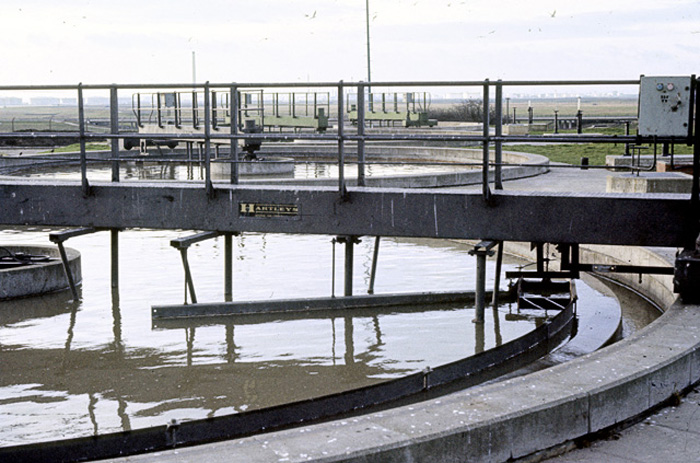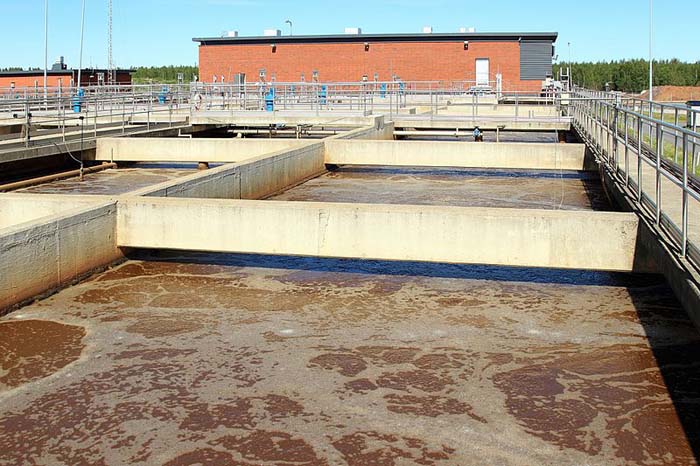
Centralized wastewater treatment has become an essential part of modern infrastructure to efficiently and systematically manage and treat wastewater from residential, commercial, and industrial sources. Sewer and pipe networks typically gather and process wastewater at a central facility. Centralized wastewater treatment primarily aims to remove pollutants, safeguard human health, and conserve the environment by ensuring the treated water satisfies regulatory standards before being discharged into natural water bodies or reused.
How Centralized Wastewater Treatment Works
Here’s a breakdown of how centralized wastewater treatment works:
- Collection
The treatment plant receives wastewater via underground pipes (sewers) from various sources, including households, companies, and factories. Sewers in this system are typically either storm (for rainwater) or sanitary (for wastewater).
- Preliminary Treatment
Grit Removal and Screening:
- Screening
Use screens to filter out big debris like plastics, rags, and sticks.
- Grit Removal
Grit chambers protect the treatment plant’s machinery from gravel, sand, and other heavy particles.
- Primary Treatment
Sedimentation:
- Skimming off the surface removes oils, grease, and other floating debris.
- Primary clarifiers, which are big sedimentation tanks, help to remove solids from wastewater by settling them to the bottom.
- Secondary Treatment
Biological Treatment:
- Aeration Tanks
Microbes (activated sludge) combine with the primary effluent in aeration tanks. Oxygen is provided to facilitate the decomposition of organic substances.
- Secondary Clarifiers
The mixture then moves to secondary clarifiers, where the microorganisms, or biomass, settle to the bottom. After collecting the purified water, part of the settled biomass is returned to the aeration tanks. The remaining biomass is discarded as waste-activated sludge.

- Tertiary Treatment (Optional)
Advanced Treatment
- Methods include adsorption with activated carbon, disinfection with ozone, ultraviolet light, or chlorine, and nutrient removal with chemical or biological processes.
- Tertiary treatment can eliminate any leftover pollutants. The effluent quality standards may include pathogens, phosphorus, nitrogen, and heavy metals.
- Sludge Treatment
Handling and Disposal
- The sludge undergoes further processing after primary and secondary treatment. This processing may involve composting or incineration, aerobic or anaerobic digestion, thickening, and dewatering in some cases.
- Further processing, landfill disposal, or fertilizer are all viable options for stabilized sludge (biosolids).
- Discharge
Release of Effluent:
- Effluent-treated water is either released into nearby bodies (lakes, rivers, or seas) or recycled for recharging groundwater aquifers, industrial processes, and irrigation.
The purpose of a centralized system
A centralized wastewater system primarily performs the following functions:
Efficient resource use
Recovering and reusing water, nutrients, and energy is a common feature of centralized wastewater treatment systems, which often use complex treatment methods. In areas where fresh water is in short supply, treated wastewater can serve multiple purposes, including irrigation for crops and factories. Using the biogas produced during treatment is another sustainable energy option.
Water management and flood control
The infrastructure that helps regulate stormwater runoff is often part of centralized systems. These systems help reduce the danger of erosion and flooding in urban areas. This is more critical than ever, with storms becoming more frequent and intense due to climate change.
Protecting the environment
Central wastewater treatment plants filter out potentially dangerous substances before discharging treated wastewater into the environment. As a result, aquatic ecosystems and biodiversity are better protected against pollution in lakes, rivers, and oceans.
Economic Benefits
Centralizing wastewater treatment to take advantage of economies of scale is a more cost-effective alternative to decentralized systems. By delivering dependable and effective wastewater services, these systems can entice businesses and industries, promoting economic development.
Regulatory Compliance
When industrial and municipal entities use centralized wastewater treatment systems, they can more easily meet water quality and discharge standards set by state and federal agencies. This mitigates the risk of financial and legal consequences from wastewater releases containing more toxins than permitted.
Community and Aesthetic Benefits
Adequate management of wastewater systems improves living conditions and enhances the quality of life in communities. This is because they eliminate sewage problems and unpleasant odors.
Protecting public health
Centralized systems collect and treat wastewater to prevent the spread of pathogens and diseases that can contaminate water. This minimizes the likelihood of getting sick from contacting untreated sewage.
Pros and Cons of Centralized Wastewater Treatment
Centralized wastewater treatment has the following pros and cons:
Pros
- Resource Recovery:
- Recovery of Nutrients
Additionally, they can recycle nutrients like nitrogen and phosphorus. They can reuse these repeatedly, thereby reducing the need for artificial fertilizers.
- Generating Energy
Some central plants can power their operations by using an additional renewable energy source, biogas.
- Environmental Impact:
- Reducing Contamination
It effectively protects aquatic ecosystems from eutrophication and pollution by lowering wastewater contaminants.
- High Treatment Standards:
- Regulatory Compliance
Strict environmental rules and standards guide the construction of centralized wastewater treatment systems, which ensure the removal of pollutants at high levels.
- Constant Quality
Their reliable and consistent treatment quality is vital for safeguarding human health and the environment.
- Monitoring and controlling:
- Expert Management
Experts who understand how to operate and maintain these systems typically oversee them.
- Advanced Monitoring
In order to improve treatment operations in real-time, centralized facilities typically incorporate advanced control and monitoring systems.
- Efficiency and Economies of Scale:
- Cost-Effective
Because of economies of scale, large-scale treatment may reduce treatment costs per treated wastewater unit.
- Cutting-edge Technology
More modern and efficient treatment methods and technology are often available in centralized systems.
Cons:
- Scalability and Flexibility:
- Rigidity
Compared to modular or decentralized systems, they may need to be more flexible in responding to new pollutants or changes in the composition of wastewater.
- Growth Limits
Once constructed, centralized systems could be difficult to expand or contract in response to changes in population size.
- Dependence on Infrastructure:
- Remote Areas
Better options might exist in less densely populated or remote locations where building sewer networks would be impractical or expensive.
- Sewer Networks
The wastewater transfer in centralized systems depends on vast sewer networks, which are susceptible to leaks, clogs, and damage.
- Initial costs are high:
- The Costs of Maintenance
Operations and maintenance costs can add up over time.
- Infrastructure Investment
Building centralized wastewater treatment plants and all associated infrastructure, such as sewer networks, requires a lot of money.
- Resource Intensive:
- Energy Consumption
Centralized wastewater systems may use a lot of energy when using cutting-edge treatment technologies.
- Water Use
Some treatment methods that require large volumes of water may threaten local water resources.
- Sludge Management:
- Disposing Sludge
The massive amounts of sludge produced by centralized wastewater treatment can be difficult and expensive to manage, treat, and dispose of.
- Environmental and social impacts:
- Centralization Risks
When a centralized system breaks down, it could affect many people in many different places.
- Construction Disturbance
The construction of massive treatment plants and wastewater networks has the potential to impact nearby ecosystems and populations greatly.
Important Considerations
Innovation
The application of modern technologies, such as nutrient recovery systems, advanced oxidation processes, and membrane bioreactors, is improving treatment effectiveness and sustainability.
Energy Consumption
Because wastewater treatment uses a lot of energy, facilities always look for methods to save energy. One such method is to make biogas from sludge digestion.
Regulations
Adherence to global, national, and regional environmental laws is required throughout treatment.
Conclusion
The main benefits of a centralized wastewater treatment system include streamlined management and control, high efficiency in pollution removal, and economies of scale. When it comes to sustainable urban development, they are crucial because of their roles in promoting public health, conserving water resources, and reducing water contamination. Some of the issues they face include high operational and capital expenses, the need for significant infrastructure, and the risk of system overloads or failures during extreme weather events.
